Protecting Piping Plovers Isn’t A Walk On The Beach
12:03 minutes
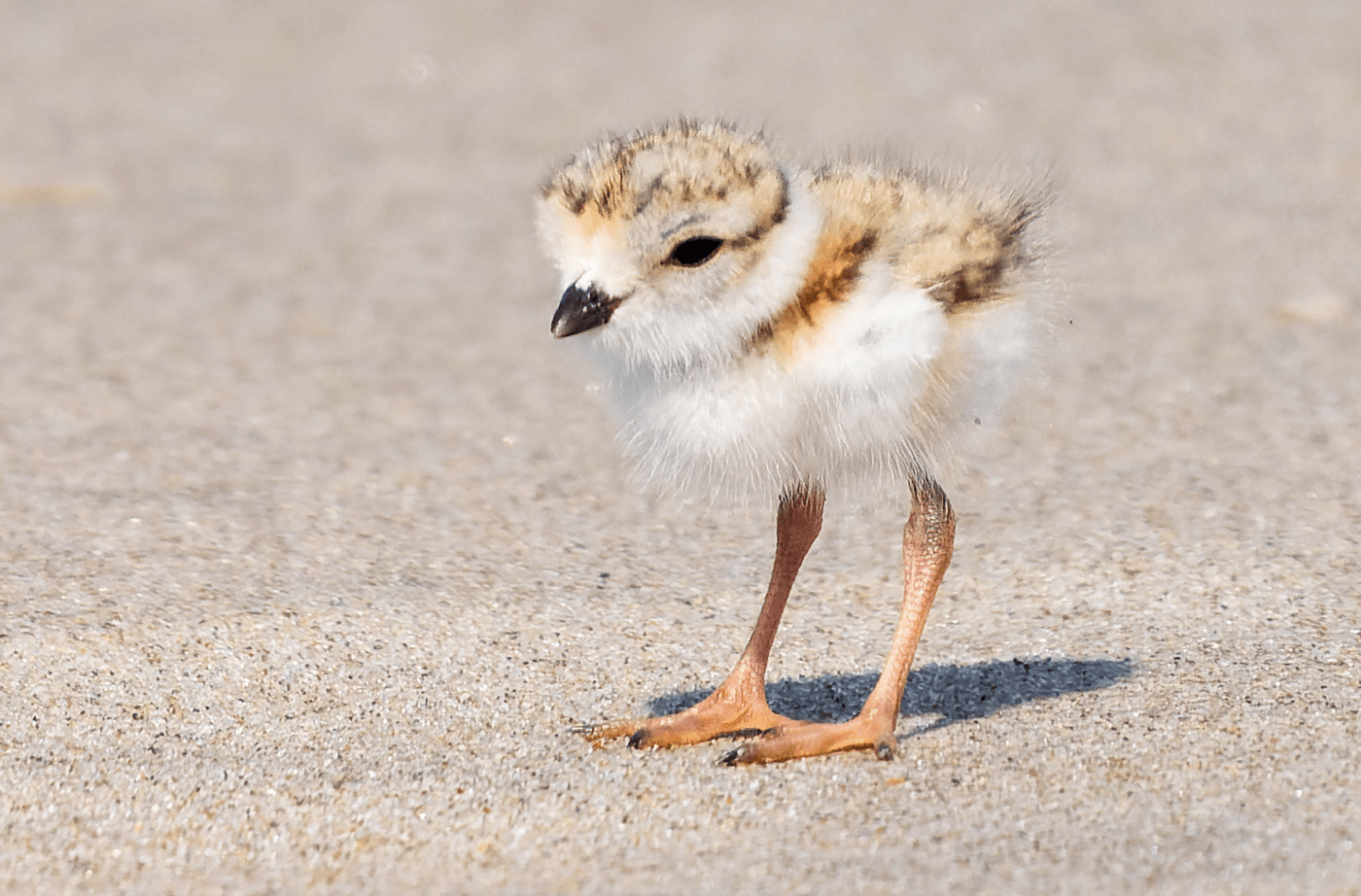

This article is part of The State of Science, a series featuring science stories from public radio stations across the United States.
July is nearly through, and so is the piping plover’s nesting season. It’s make-or-break time for these small, endangered shorebirds.
There are roughly 8,000 piping plovers in the entire world. To put that in context, birders often get really excited to see a rare bird like a snowy owl. But there are about 28,000 snowy owls in the world, three times the number of piping plovers.
Since piping plovers make their nests along the water and out in the open, their chicks are very vulnerable to being gobbled up by predators. And a major reason for their decline in numbers is human development along the beaches, lakes, and rivers where piping plovers lay their eggs.
SciFri radio producer Shoshannah Buxbaum went out to Fort Tilden in Queens, NY to report on a volunteer-run conservation effort along the New York City coastline.
And later in the segment, Michigan radio reporter Lester Graham talks with guest host Sophie Bushwick about the unique challenges and triumphs of the piping plovers who nest along the Great Lakes.
The following story, by Lester Graham, was originally published by Michigan Radio.
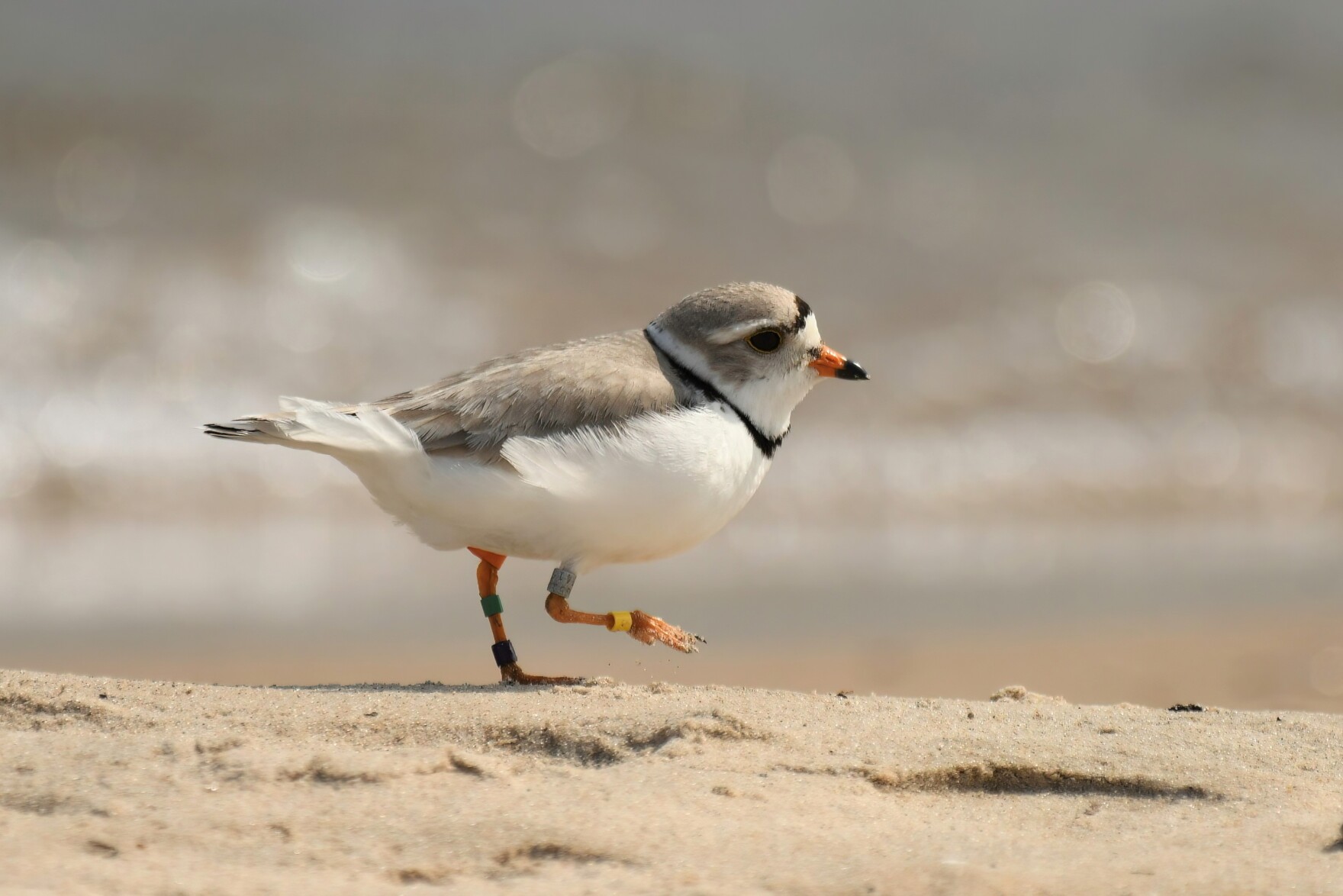
Newly hatched chicks from birds on the Endangered Species List are running up and down a handful of beaches in the Great Lakes region. The population is recovering from near extinction, but they’re still dependent on a lot of human help.
These shorebirds won’t nest anywhere but on a Great Lakes beach, one with a lot of pebbles and rocks. Some of those birds nest on Lake Michigan’s beaches at the Sleeping Bear Dunes.
Looking through binoculars at a nest, it doesn’t appear the male piping plover put much effort into building it—and that’s part of why they can be so vulnerable to disturbance.
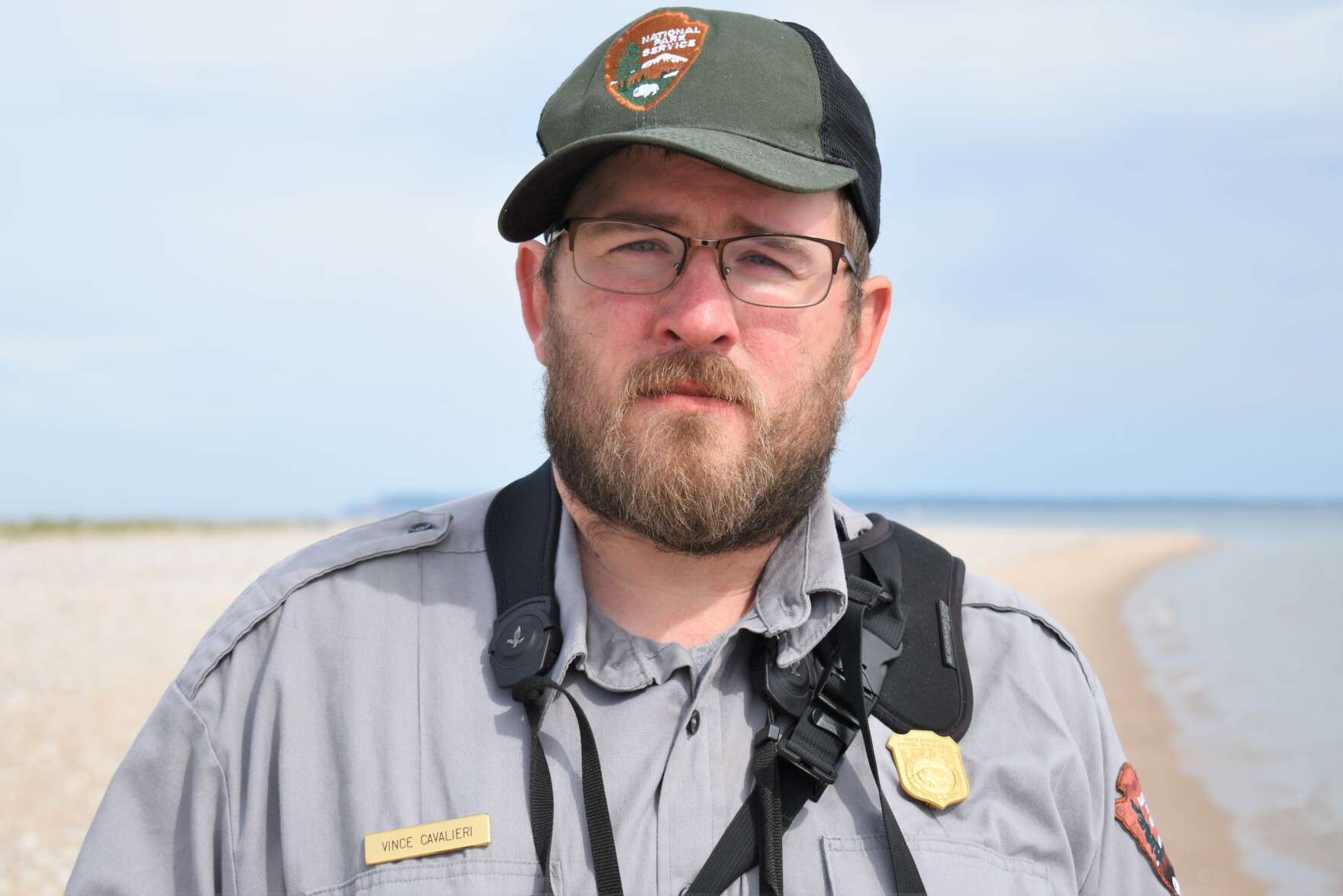
“Simply sitting on the sand and kicking their back feet out and making a little depression in the sand. And that’s where the female will lay her eggs. They then typically line the nest cup with shells or small pebbles. And that’s the entirety of the nest,” said Vince Cavalieri, a wildlife biologist at Sleeping Bear Dunes National Lakeshore.
There are not a lot of isolated beaches like this one left. There’s been an explosion of vacation homes and other development along most of Michigan’s coastlines. That’s meant disruption for these sensitive birds.
“Habitat loss and recreation pressure are probably the two biggest remaining threats, but they also face threats from predation. A lot of the predator species, like crows and raccoons, have increased in number with human changes to the environment,” Cavalieri said.
Another predator, the merlin falcon, is increasing in numbers after nearly being wiped out because of DDT contamination. It is becoming a new threat to piping plovers.
Signs and rope barriers warn people—especially those with dogs—to keep their distance. If piping plovers feel threatened, they’ll abandon the nest.
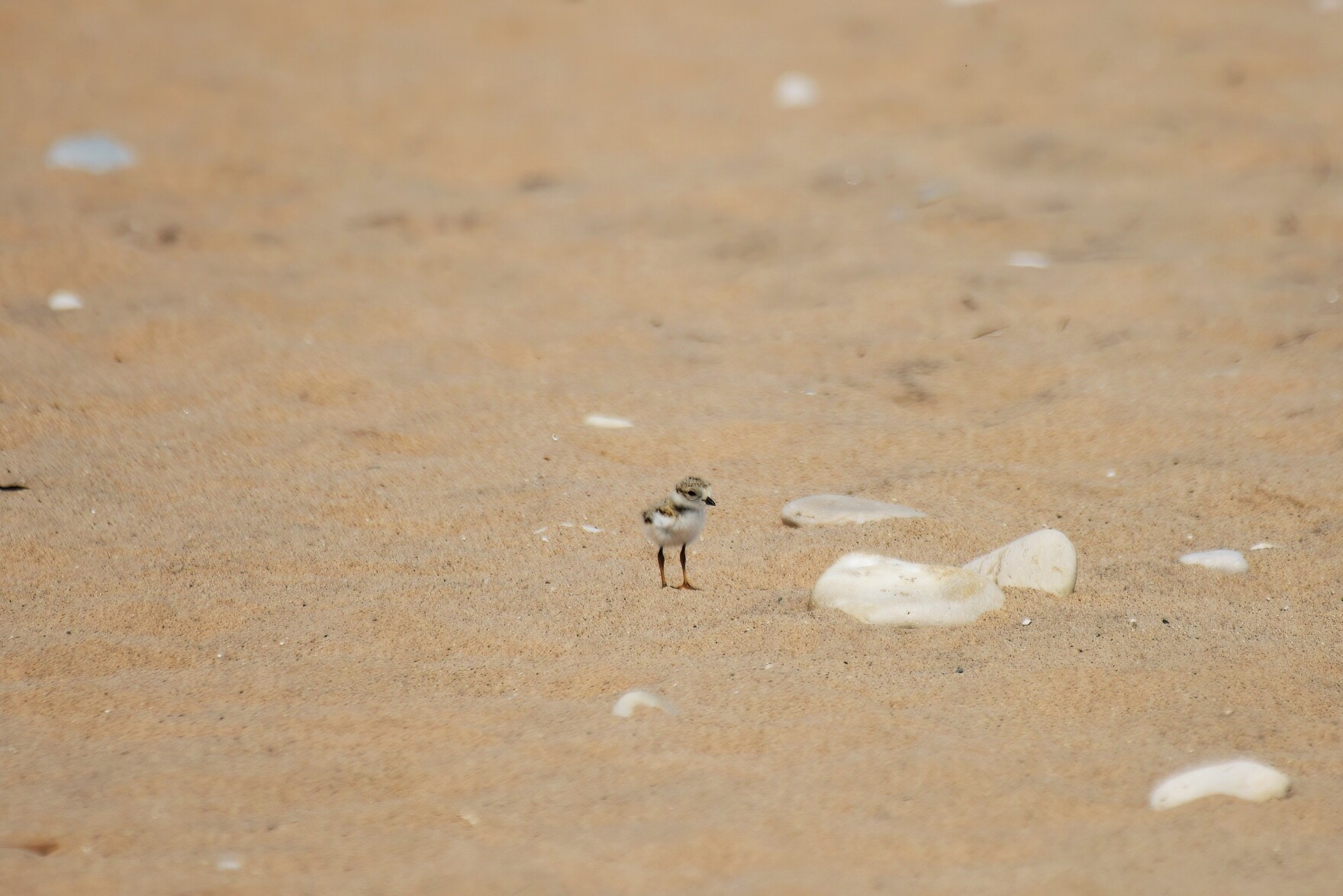
As Cavalieri spoke, three tiny piping plover chicks started running around among the pebbles. They looked like two twigs with a bit of fluff at the top.
This year looks to be a good year for piping plover reproduction. As recently as 2020 there were multiple failures. That year was one of the lowest survival rates of chicks since the piping plover was put on the Endangered Species List. The reason was high Great Lakes water levels which inundated many of the sites that piping plovers use for nesting.

Francie Cuthbert is a professor with the University of Minnesota’s Department of Fisheries, Wildlife and Conservation Biology. She’s worked for decades to save the Great Lakes piping plover. She recently spoke in Michigan about the decline of the piping plover population, which by the mid-1980s was almost wiped out. “There were only 12 to 17 pairs, so they were functionally extinct in the Great Lakes region, extirpated as a population. So the situation was pretty dire.”
Since then, the population has increased to an average of 70 or more breeding pairs over the last few years. This year there are 74 nesting pairs.
To help protect the birds and monitor how they’re doing while they’re nesting, a lot of people watch over them.
“It’s a big group effort between park employees, partners working with us, and then a large volunteer group that also helps us keep an eye on the birds,” said Erica Adams, the piping plover coordinator at Sleeping Bear Dunes.
Keeping an eye on the birds means a couple of things. First, it means observing the number of eggs, watching to see if the parents stick around, and then counting the chicks. It also means keeping people and pets outside of the restricted area.
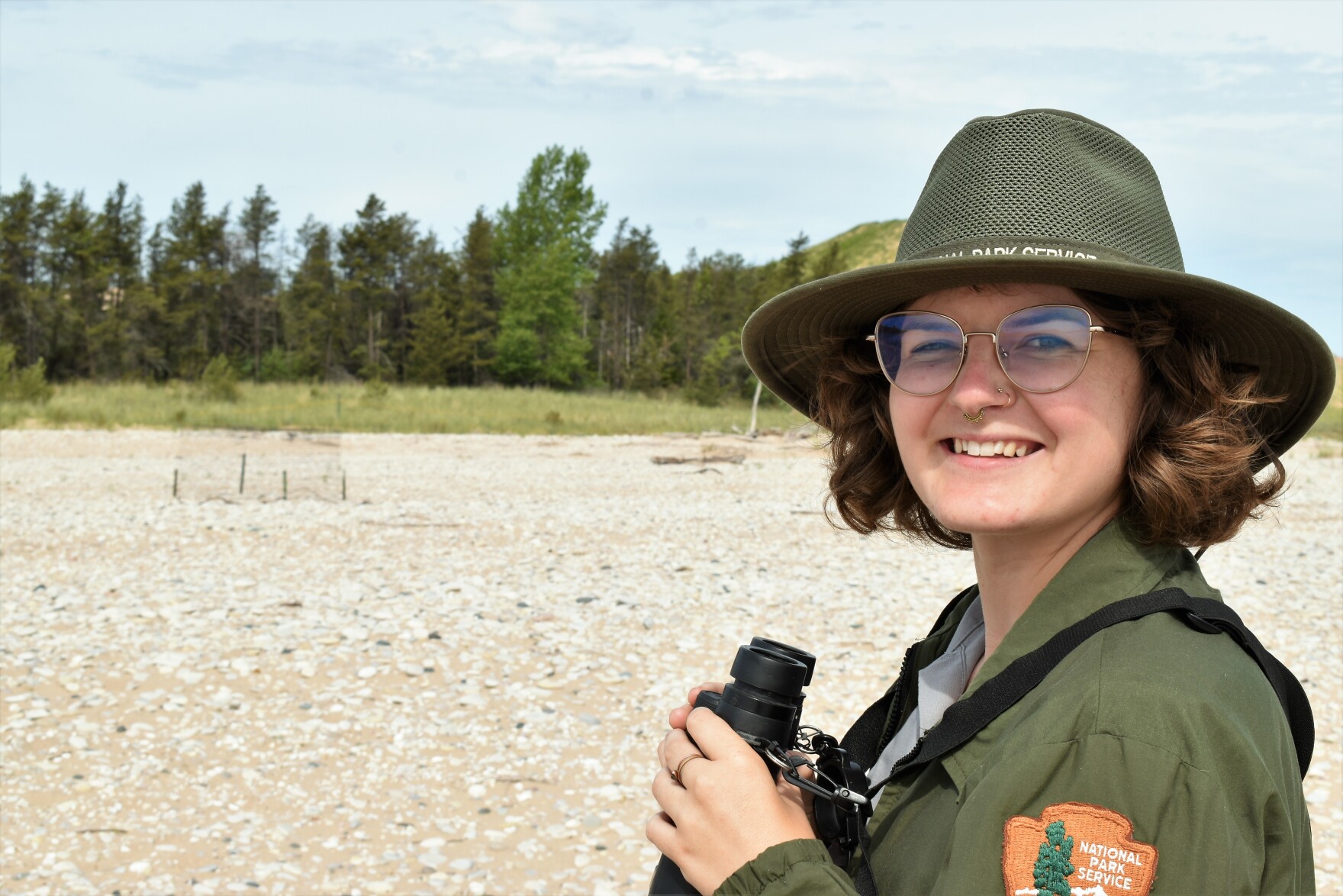
And if something does happen to the piping plover parents, the wildlife biologists rescue the eggs.
“We have a partnership with the Detroit Zoo and the University of Minnesota that will then take those eggs, put them in a captive rearing facility, complete the incubation period. The chicks will hatch and then usually they’re released back in the park. They’re able to go out and forage, learn how to be a plover, and then they’ll eventually migrate. And we keep our fingers crossed that they return the next year,” Adams said.
Farther north on Michigan’s coast, another monitor was still waiting for chicks.
Kailie Sjöblom was hired by the Michigan Department of Natural Resources to watch for a male piping plover that usually nests near Muskegon. It didn’t show up this year. On average, piping plovers live about five years. That male was ten years old. The guess is the old bird just didn’t survive the migration to the breeding grounds.

Sjöblom transferred to Fisherman’s Island State Park near Charlevoix to keep watch over a pair nesting there. It’s the first time there’s been a mating pair there since 2004.
“They’re very cute. They’re little bow-legged, pigeon toed. Almost kind of like a little bulldog in a way, the way they kind of scurry down the beach,” she said with a laugh.
Sjöblom said she gets to know the birds and their habits when she watches them every day. And she added that being on the beach day in and day out helped her see a bigger picture.
“To me, it’s not even so much about the bird. I see them really as just also a physical embodiment that’s just in this little furry, feathery case that represents the health and the integrity of the Great Lakes and a healthy ecosystem.”
Most of the people strolling the beach have no idea that the little bird they see scurrying is one of the last of its kind.
Over the weekend, Sjöblom sent word that three of the four eggs hatched.
Restoring the population to the historic 200 to 300 nesting pairs is still a ways off. And it’s not at all clear how well the birds will do without human help when and if the bird is no longer on the endangered species list.
Francie Cuthbert with the University of Minnesota said there are a lot of challenges ahead, but she noted the Great Lakes states are working together on those challenges and funding from the Great Lakes Restoration Initiative will remain in place for the foreseeable future, helping to keep the piping plover monitoring in place.
“I really continue to be hopeful that we can move on in a positive way into the future.”
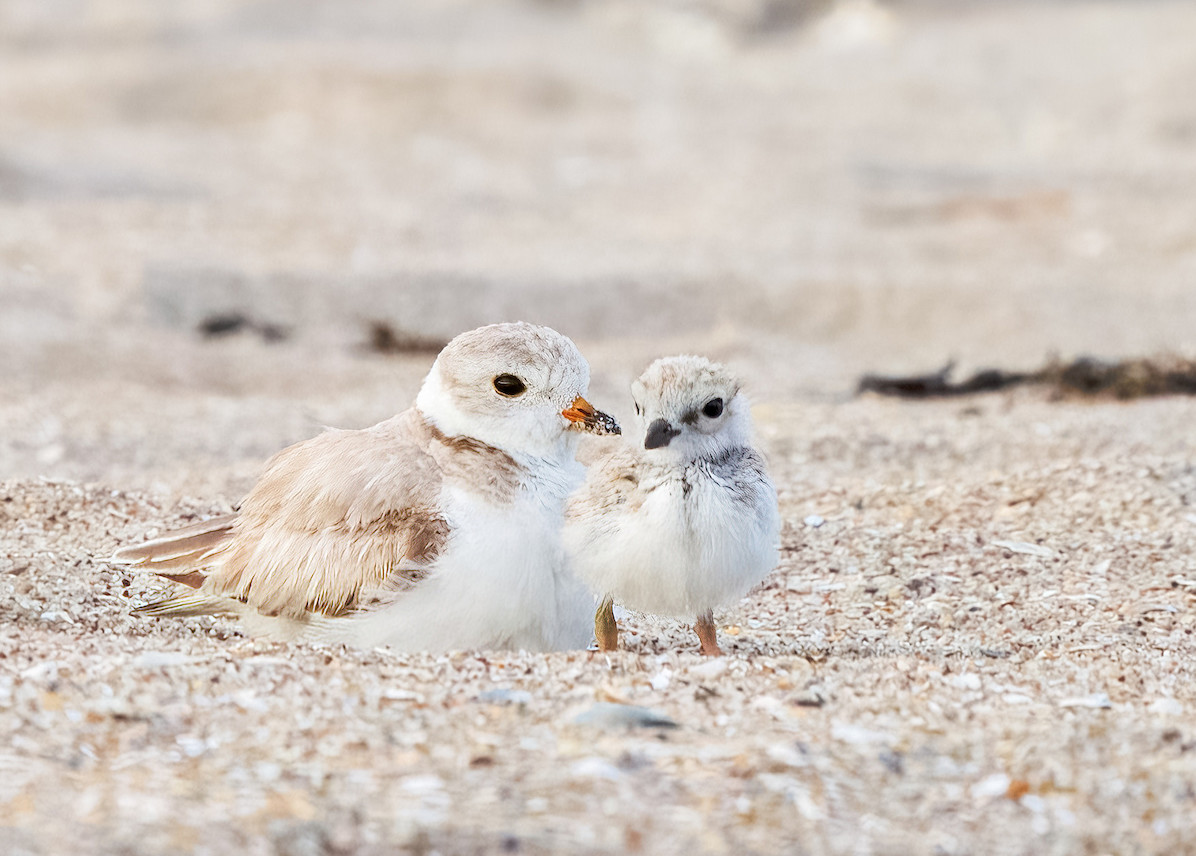
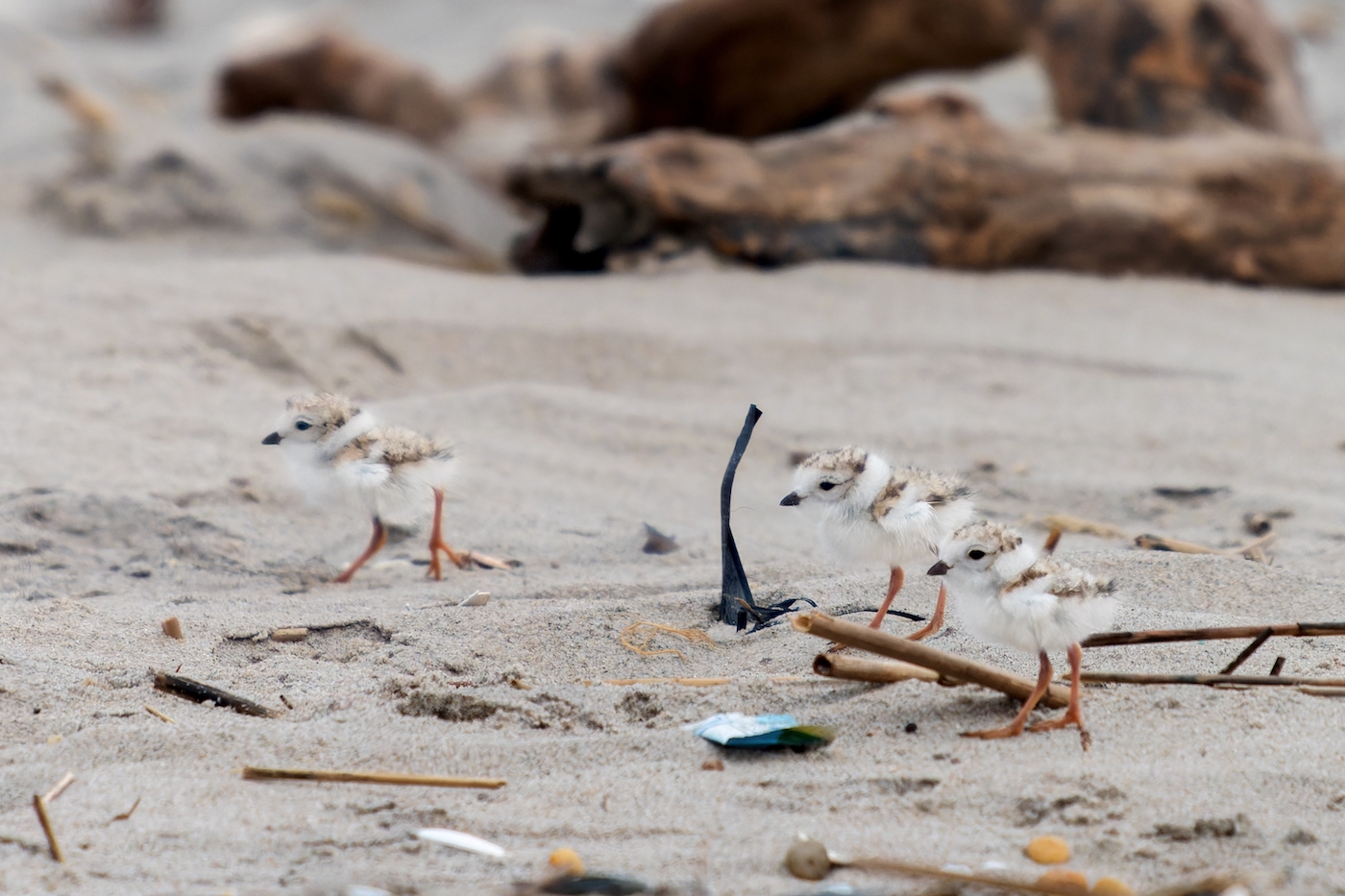
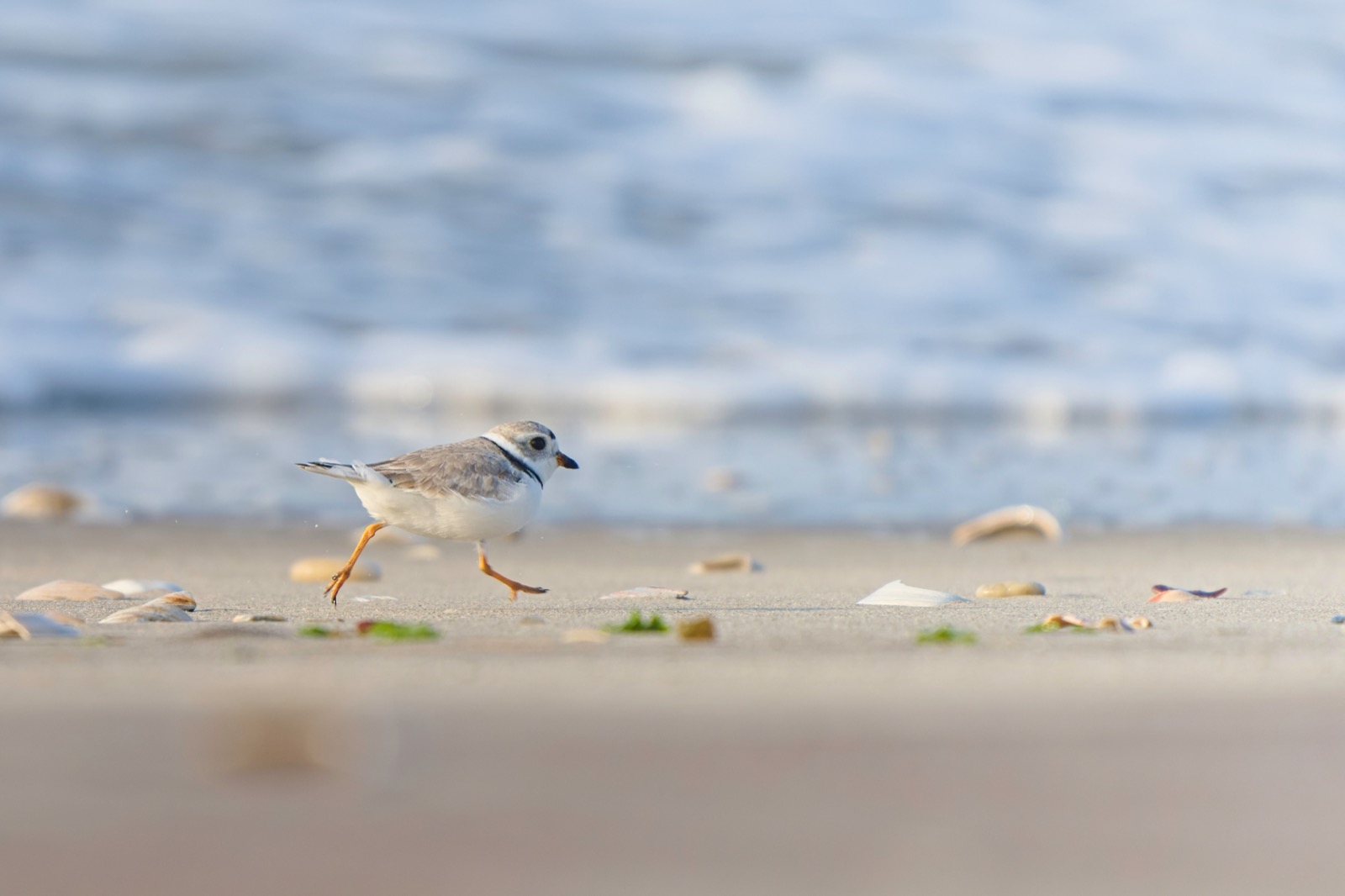
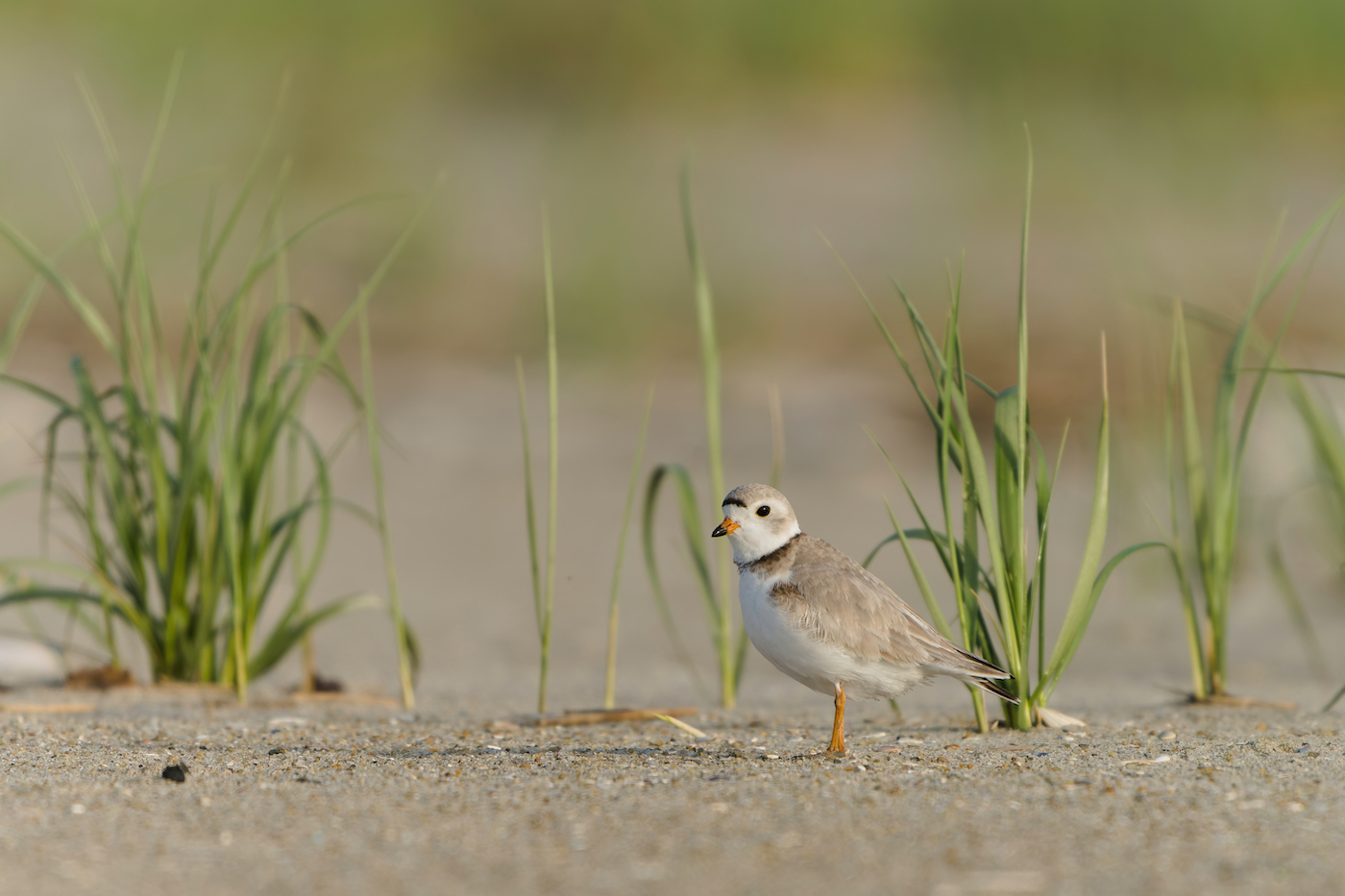
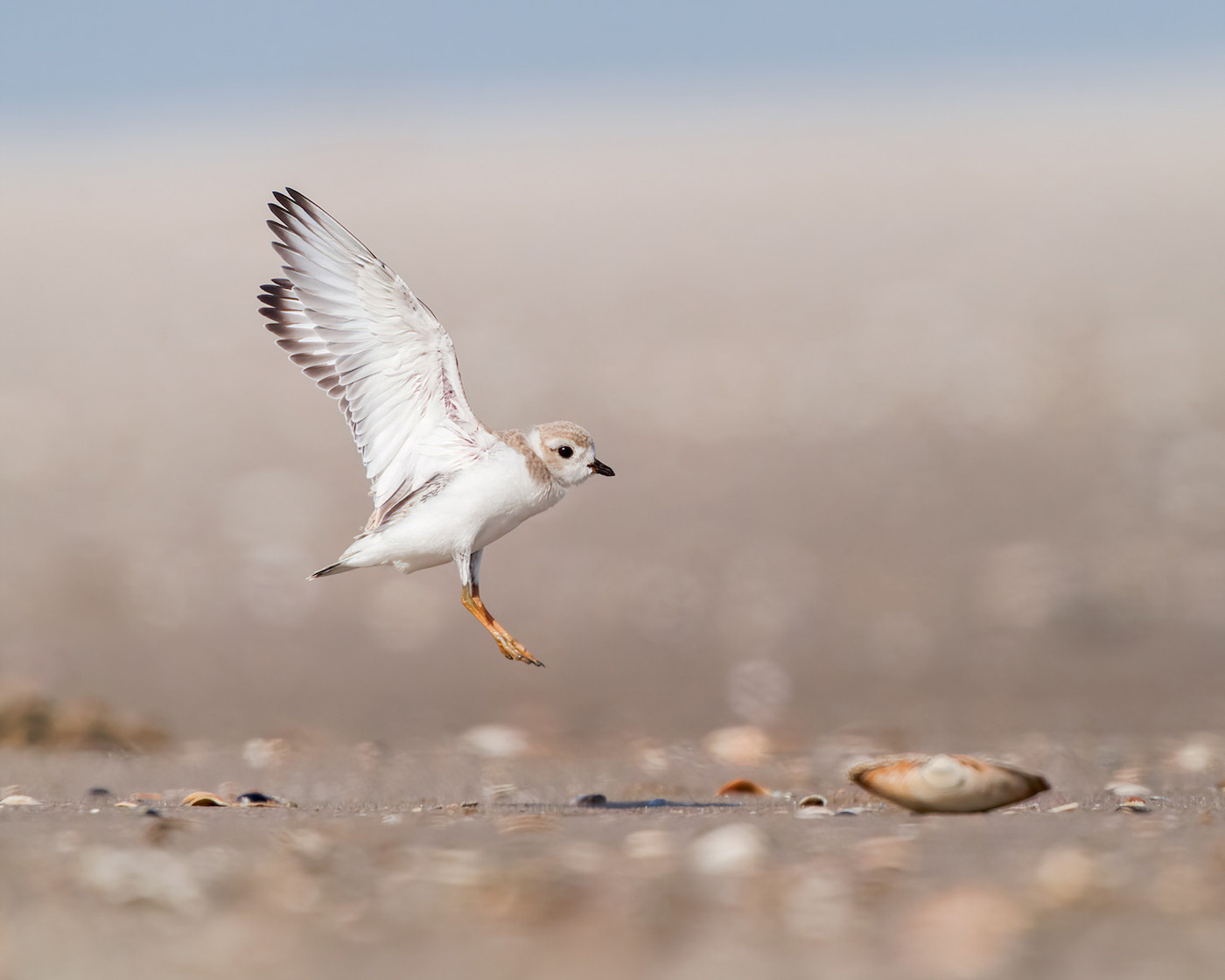
A wobbly hatchling gets the hang of walking on the beach. Credit: Benjamin Forbes
Invest in quality science journalism by making a donation to Science Friday.
Chris Allieri is the founder of the NYC Plover Project.
Lester Graham is a reporter for The Environment Report at Michigan Radio.
SOPHIE BUSHWICK: This is Science Friday. I’m Sophie Bushwick. And now it’s time to check in on the state of science.
SPEAKER 1: This is KERA News.
SPEAKER 2: For WWNO–
SPEAKER 3: Saint Louis Public Radio.
SPEAKER 4: KKED News.
SPEAKER 5: Iowa Public Radio News.
SOPHIE BUSHWICK: Local science stories of national significance. July is nearly through, and so is the piping plover’s nesting season. It is make or break time for these small endangered shorebirds. And I heard that SciFri producer Shoshannah Buxbaum is a piping plover superfan.
SHOSHANNAH BUXBAUM: Hi, Sophie. Yes, you are correct. I mean, I’ve been obsessed with them ever since I first learned about them six years ago.
SOPHIE BUSHWICK: I know that it’s pretty rare to see a piping plover flit across the beach. But just how many of them are left?
SHOSHANNAH BUXBAUM: So there are roughly 8,000 piping plovers in the entire world. And to put that in context, birders often get really excited to see a rare bird like a snowy owl. But there are about 28,000 snowy owls in the world, which is still not enough and not a lot, but that’s over three times the number of piping plovers.
SOPHIE BUSHWICK: Oh, wow. Why are there so few piping plovers. How did they become an endangered species?
SHOSHANNAH BUXBAUM: Yes, so piping plovers like to nest along the water out in the open, which makes their babies very vulnerable to, say, a predator just gobbling them up. But a really big factor here is, well, us.
SOPHIE BUSHWICK: Oh, no.
SHOSHANNAH BUXBAUM: I know. We’re taking up prime nesting real estate on the beach. Good news, though– there are people out there who are trying to protect the plovers.
SOPHIE BUSHWICK: And you actually got to go see some plovers up close.
SHOSHANNAH BUXBAUM: Yep, that’s right. Hands down the highlight of my year. Last week, I went to visit a protected area out on Fort Tilden. It’s a New York City beach out in the Rockaways and some of the toughest terrain for these tiny birds. And I got to talk with the volunteers dedicated to keeping them safe.
We’re getting close. This will be my first, my first piping plover IRL ever.
CHRIS ALLIERI: Oh my gosh. You are in for a treat.
SHOSHANNAH BUXBAUM: I’m so excited. I’ve seen so many photos of them.
CHRIS ALLIERI: I get excited every single time I see them. Yeah, there’s the adult, and there’s the chick. Right there. That chick’s getting pretty big. That’s a really nice-sized chick.
SHOSHANNAH BUXBAUM: Oh my god, it’s so little. They just, like, scamper. It looks like they’re almost floating above the sand. They’re going so fast.
CHRIS ALLIERI: Watch the adult. It moves one of its feet in the front to get things to come up in the sand. And if you watch the little chick as well, it’s watching its parent to do the same thing. And one of the things, too, is that they respond to certain calls, but just like human children, they don’t always listen to their parents.
SHOSHANNAH BUXBAUM: If you’ve never seen one, piping plovers sort of look like a cotton ball plopped on top of two sticks with a little black ring around their necks. They’re tiny and really easy to miss if you aren’t looking for them. But luckily, I had an experienced guide.
CHRIS ALLIERI: I’m Chris Allieri. I’m the founder of NYC Plover Project. I grew up on the beaches of South Jersey, on the southern tip of Long Beach Island in Holgate, New Jersey, which happens to be now the most important place for plovers in New Jersey. But I’d never seen them up close.
And fast forward to the beginning of the pandemic. I was out here in March of 2020, and I saw a piping plover run by me, and then another, and then another. I saw, like, six or seven. And they were at close range.
And then I saw dogs off leash. I saw kids up on the dunes. I saw no signage. And it was just like, what is going on? I mean, I’m shaking my fist, and I’m shaking in excitement and also anger.
SHOSHANNAH BUXBAUM: So Chris decided to channel that anger into action, and he founded the NYC Plover Project. By the next spring, he partnered with the National Park Service to set up closures all along the Rockaway Peninsula. They’re staffed by a bevy of dedicated volunteers. And now, in its second year, the nonprofit has roughly 75 volunteers. And they’ve clocked about 2,000 hours so far this season.
CHRIS ALLIERI: This is our volunteer, Leann.
LEANN BEARD: Hi, nice to meet you.
SHOSHANNAH BUXBAUM: Hey, Leann.
CHRIS ALLIERI: She’s staffing at our closure right now. What’s the story right now?
LEANN BEARD: There was somebody in the roped-off area, and we had one runner kind of like blow through. And I was like, hey, this is a– there’s an endangered bird over here. They were outside of the roped-off area for a while.
CHRIS ALLIERI: This is what happens. When we do close the beach, the chicks and the birds will immediately exit the closure, because it’s not sufficient. They’re like, no, no, no, we meant the whole beach.
SHOSHANNAH BUXBAUM: The volunteers have a deceptively hard job. They’re the enforcers. And if someone goes through the closed-off area, tries to bring in their dog, which is a no-no, they have to tell them politely to walk around to another path.
Most people are respectful. But this is New York, after all. And right now, it’s the very end of the breeding season. And Chris– he’s not taking any chances.
CHRIS ALLIERI: And it’s like, at this point in the season, we’re not in a high-tolerance mood. You’re going to get a talk, you know? You’re going to get a chat.
SHOSHANNAH BUXBAUM: In the roughly 45 minutes I was standing by the closure at Fort Tilden Beach, Chris called the park police twice– one person who walked through the closure area, and then there was a group with a dog who had already been asked to leave but tried to enter again.
CHRIS ALLIERI: And I mean, some people might think that that’s heavy handed. But here, listen– we had a chick stepped on on this beach, right here, two days ago. So we cannot be too careful.
SHOSHANNAH BUXBAUM: And the chick was sent to a rehab facility in Delaware, but unfortunately, the chick didn’t make it. And these plover chicks are up against a lot. Their list of predators is, well, long.
CHRIS ALLIERI: We’re seeing ghost crabs, raccoons, feral cats, dogs. We had a drone incident where birds were attacking the drone, and then everybody’s chicks went everywhere. When things like a drone or fireworks show up, all bets are off, right? Like, it just creates a terror event.
SHOSHANNAH BUXBAUM: So why, then, do the plovers insist on coming back every year to such a precarious place to nest?
CHRIS ALLIERI: Well, the sad truth is that from Delaware up to Maine, there’s very few beaches without people. So with that, they are creatures of habit. And so they are going to keep coming back to these beaches for food sources.
SHOSHANNAH BUXBAUM: The piping plovers migrate up from Florida and South Carolina, some as far as the Caribbean. They arrive in March, but they don’t start nesting until April or May. This year, there are 49 breeding pairs nesting on New York City beaches and just two fledglings– that is, chicks that have learned to fly. And hopefully, the baby I saw on Fort Tilden Beach will be fledgling number three. But piping plovers born on beaches surrounded by people, like these city birds, tend to be smaller, have lower survival rates, and just take longer to be mature enough to fly.
CHRIS ALLIERI: It’s hard not to get discouraged. It’s hard not to get sentimental. But in this work, there is no time for that, right? And the plovers don’t have time for that, right? So the next day– I’ve seen this happen multiple times. They’ve lost one, two, three, four of their chicks, or their nest was destroyed, and then the next day they’re at it again, copulating and trying it again.
SHOSHANNAH BUXBAUM: And Chris takes his cue from the plovers– just keep going. Keep advocating for more and better closures. Keep educating the public.
CHRIS ALLIERI: These are large, complicated beaches, but it’s not impossible. We have seen success of endangered species like the bald eagle, right? We can see bald eagles now in New York City.
SHOSHANNAH BUXBAUM: And the thing that really keeps Chris going– teaching that next generation.
CHRIS ALLIERI: And when I can show young people, that’s a parent, that’s a chick really close by, I mean, that’s such a gift to be able to do that. I feel like I’m passing along something that someone was kind enough to pass to me.
SHOSHANNAH BUXBAUM: For Science Friday, I’m Shoshannah Buxbaum.
SOPHIE BUSHWICK: Thank you, Shoshannah. There are actually three different regions in North America where piping plovers migrate each year. Some birds nest and lay eggs along the Atlantic coast. That includes the plovers we just heard about along New York City beaches. Others migrate up to the northern Great Plains. And last but not least, some piping plovers breed along the shorelines of the Great Lakes. Different habitats mean different challenges and different triumphs for these tiny birds.
Joining me now is Michigan Radio reporter Lester Graham to tell us more about his reporting on the piping plover population in the Great Lakes region. Lester, welcome to Science Friday.
LESTER GRAHAM: Hi there. Good alliteration there.
SOPHIE BUSHWICK: Thank you. So has it been a good year for the piping plovers in the Great Lakes region?
LESTER GRAHAM: It’s been a good year simply because there were a lot of chicks this year. We had about an average number of nesting pairs, right around 71 nesting pairs across the area in four different states and Ontario and across all five Great Lakes. But most of them, like usual, are concentrated in Michigan.
SOPHIE BUSHWICK: And how does this year’s population compare to previous years?
LESTER GRAHAM: That population of nesting pairs is pretty close to what it’s been for the last few years. It’s kind of plateaued. But we’ve had some rough years because of high water on the Great Lakes. And as you know, they nest on the sand and right next to the water. And it doesn’t take much for their nests to become inundated.
SOPHIE BUSHWICK: You recently took a trip to the Sleeping Bear Dunes National Lakeshore. What did you learn about piping plover nests there?
LESTER GRAHAM: Well, I was talking to a wildlife biologist there, Vince Cavalieri. And he basically said they don’t put a lot of effort into their nests.
VINCE CAVALIERI: Simply sitting on the sand and kicking their back feet out and making a little depression in the sand. And that’s where the female will lay her eggs. They then typically line the nest cup with shells or small pebbles. And that’s the entirety of the nest.
SOPHIE BUSHWICK: We just heard about what the piping plovers are up against on New York City beaches. But what are the biggest threats to the piping plovers in the Great Lakes region?
LESTER GRAHAM: Yeah, mostly predators. I mean, we see a lot of raccoons and crows that are getting in and getting the nest or killing an adult. And recently, in the last few years, we’ve seen a return of an endangered falcon, the merlin. And with that bird, they’ve been killing the adult piping plovers.
So the wildlife officials have a lot of decisions to make. Do you kill the predator bird to save the piping plover? Or do you find some other way, non-lethal way, to deal with these predators so that you have a population of piping plovers? It’s a tough decision for them.
SOPHIE BUSHWICK: And after hanging out with the Great Lakes plovers, do you feel positive about the future of this population?
LESTER GRAHAM: I really do, because of the number of chicks that were hatched in the wild this year. There were at least 231 chicks hatched in the wild. And then there were some other eggs that were saved by the biologists because a predator might have killed one of the adults. So there were an additional 11 chicks that hatched in the captive rearing center from abandoned eggs. So that’s a big number. When you’re talking about only 71 nesting pairs, and now you’ve got something like 242 chicks that have been introduced into the world, that’s good news by any means.
SOPHIE BUSHWICK: Thanks, Lester, for sharing your reporting with us.
LESTER GRAHAM: Thank you.
SOPHIE BUSHWICK: Lester Graham is a reporter for The Environment Report at Michigan Radio, based in Ann Arbor, Michigan.
Copyright © 2022 Science Friday Initiative. All rights reserved. Science Friday transcripts are produced on a tight deadline by 3Play Media. Fidelity to the original aired/published audio or video file might vary, and text might be updated or amended in the future. For the authoritative record of Science Friday’s programming, please visit the original aired/published recording. For terms of use and more information, visit our policies pages at http://www.sciencefriday.com/about/policies/
Shoshannah Buxbaum is a producer for Science Friday. She’s particularly drawn to stories about health, psychology, and the environment. She’s a proud New Jersey native and will happily share her opinions on why the state is deserving of a little more love.
Diana Plasker was the Senior Manager of Experiences at Science Friday, where she created live events, programs and partnerships to delight and engage audiences in the world of science.
Sophie Bushwick is senior news editor at New Scientist in New York, New York. Previously, she was a senior editor at Popular Science and technology editor at Scientific American.